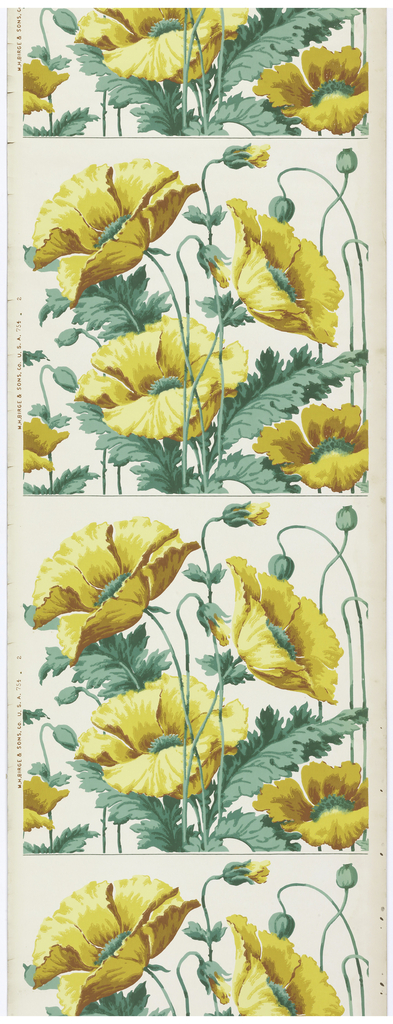This roll of wallpaper sports a rather unusual look. The design is printed vertically but it is not a continuous pattern. Intended to be installed as a wide border or frieze running horizontally, each almost square repeat of this design would be cut apart with the sections installed side by side, as the floral and foliate bits seen at the left edge complete the larger center plant on the right. What is unknown is how exactly this paper was intended to be used. It is a frieze intended to top off a papered wall, giving the patterned wall a little breathing room up near the ceiling, and is most likely an independent frieze, designed to work with any one of a multitude of tone-on-tone patterned wallpapers. Produced before the do-it-yourself days, most people employed paperhangers and with all the extra cutting this paper required would undoubtedly be a paperhanger’s nightmare. While it would have been much easier to install had the design been printed in a horizontally format, the repeat is not actually square, with the printed design being slightly greater than the width of the paper. The Birge Company produced a number of similarly formatted friezes at this time.
Many floral papers were designed for the bedroom, and as poppies were the flower of sleep that is probably where this paper would be used. Containing bright yellow poppies it is very much in the art nouveau style of decoration. The early twentieth century was one of the heydays of wallpaper usage and everybody had wallpaper, on both the walls and ceilings. It was very common to combine a wallpaper with a coordinating border or frieze and still use a third pattern on the ceiling. The trend for using multiple patterns in a room continued into the 1950s.
